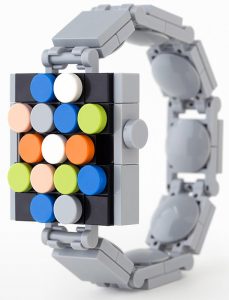Glanceability & The Glanceable User Experience
 Tight flight connections are tough – and I’m not talking about actually getting from one flight to another. The difficult part is finding out which concourse and gate you need to get to, as well as the most efficient way to get there. This is just one of many scenarios where a glanceable user experience is essential – starting with displays (be it on an airport monitors or on a phone screen) that tell you where you need to go, and what time you need to be there, followed by clear and visible signs directing you to your next gate.
Tight flight connections are tough – and I’m not talking about actually getting from one flight to another. The difficult part is finding out which concourse and gate you need to get to, as well as the most efficient way to get there. This is just one of many scenarios where a glanceable user experience is essential – starting with displays (be it on an airport monitors or on a phone screen) that tell you where you need to go, and what time you need to be there, followed by clear and visible signs directing you to your next gate.
Simply put, glanceability refers to presenting important and relevant information to users in a way they can easily understand and act on it. While the airport is one place where glanceable information is important, we are surrounded by many other situations where a glanceable user experience is not only important, but also crucial. One such example is a car dashboard, where the driver needs to be able to monitor gauges with a glance before focusing their attention on the road again.
Glanceable user experiences are important for users at the intersection of information overload and mobile usage. Most of us are drowning in information – from status updates and tweets from friends to work related email, presentations and reports. Mobile usage brings with it smaller screens, varying attention spans and interrupted usage. Filtering, summarizing, prioritizing, and visually presenting relevant information to users when and where they need it is the challenge faced while designing glanceable user experiences. To create a glanceable user experience, consider the following aspects of glanceability:
- Filtering: At any given time, there is a lot of information fighting for the user’s attention, forcing the user to filter and focus on what they need. To improve glanceability, filter and present relevant content to the user. Going back to our airport connection example above, the user is looking for information related to his particular connecting flight, not necessarily information about his return flight or other upcoming flights.
- Prioritizing: Even after filtering information, there often is still a lot of relevant information for the user. What is the order of importance of elements of the filtered information for the user? In our example, the user is looking for where he needs to go (what terminal / concourse, and what gate), and what time he needs to be there to make the connection. There is a big difference between having 15 minutes to make a connection and 2 hours between flights – which could impact the priority of information displayed to the user.
- Timely and Relevant: Give the user the most updated information when they need it, or look it up. Back to our example, the connecting flight often may not have an assigned gate when the user checks in or even boards their first flight. When they land, the mobile boarding pass should automatically show the updated gate information instead of making the user look it up.
- Context-Aware: While there is a lot written about mobile context, in a nutshell, leverage what you know about the user in addition to information that the user has provided, and respect their preferences and settings. In our airport example, if the user has a long time between flights, a mobile app could show location and social based content – like dining options, the nearby airline lounges they have access to, or maybe any friends or acquaintances who are nearby. If the connecting flight is 10 minutes from closing their doors, that same information is probably not important to the user. Or in there’s a delay or cancellation, context aware apps could offer alternate flight options.
- Presentation: How the information is visually displayed to the user to help them understand it. This can be achieved through careful use of text, colors, images and icons. Even within the filtered and prioritized information above, some parts may be given more visual importance when presented to the user – our airport user’s attention could be drawn to information that has changed since they last looked at it in the app through the use of a highlight, or a delay emphasized using color.
While glanceable user experiences are important today in reporting dashboards and tiny mobile devices, they will be even more valuable for upcoming wearable tech like Google Glass or the Pebble Smartwatch (or Apple’s rumored iWatch for that matter).
A glanceable user experience may just be the difference between a person making his tight connection just before the door closes and another struggling to find his gate and reaching there as the aircraft is taxiing on the runway.
If this made you interested in exploring information display, I recommend the writings of Stephen Few (Information Dashboard Design: The Effective Visual Communication of Data) and Edward Tufte (The Visual Display of Quantitative Information) – two respected experts on the topic, including hierarchy of information and avoiding information overload.
Do you have some examples of good and bad glanceable user experiences? Leave a comment below and share them with us!

Leave a Comment